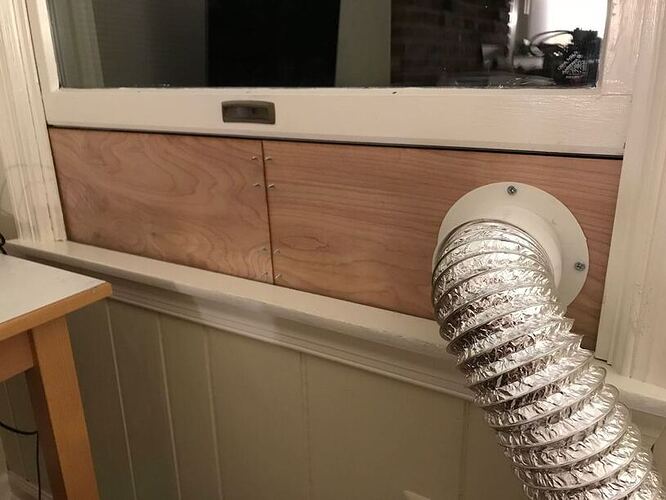Improvements! I went to Home Depot and found this dryer duct to wall connector. Also picked up some 2x4 1" birch plywood which I had them cut in half vertically so I could break it down easier, some #10x5/8" wood screws, and this pack of utility hinges.
Did some measuring, cut out the vent hole and pilot holes for the mounting screws and squared off the stock:

The plywood cuts well at the common Proofgrade thick plywood setting of 150 speed at full power, with the focus adjusted to the measured thickness.
window vent svgs.zip (2.5 KB)
I mounted the hinges by hand with a drill. If I had remembered about them earlier, I would have cut their pilot holes with the Glowforge, too.
Exhaust side, showing the hinges:
In correct orientation with duct mounted:
The hinges are for easy installation and compact storage, since I want to be able to close the window when not in use.

